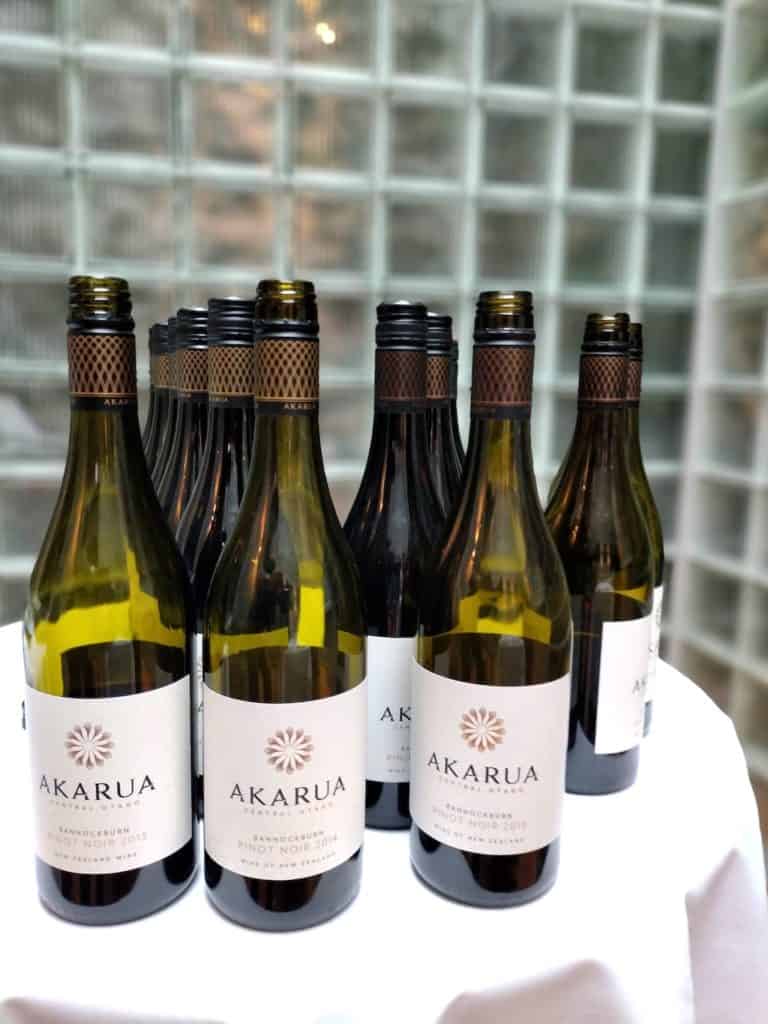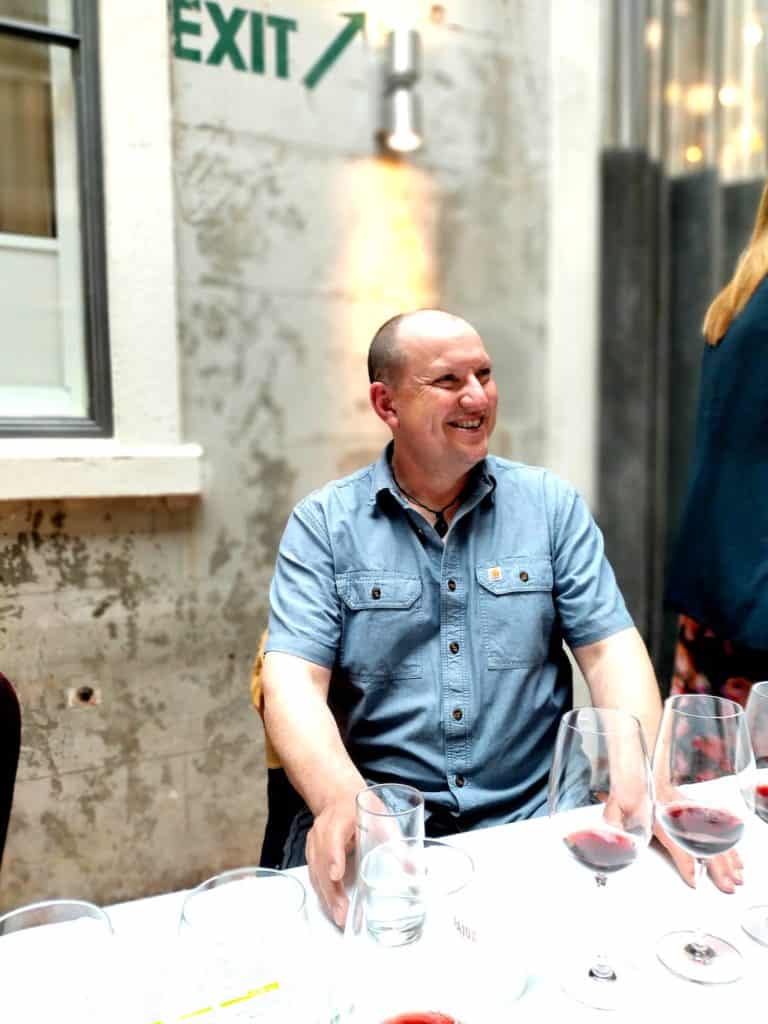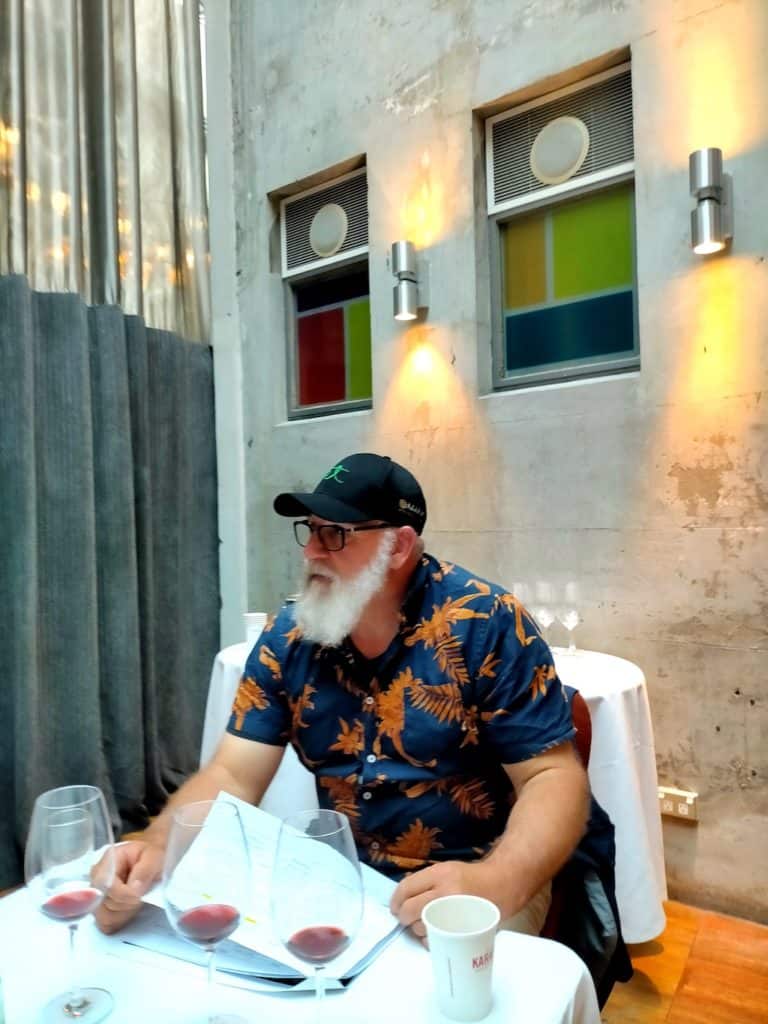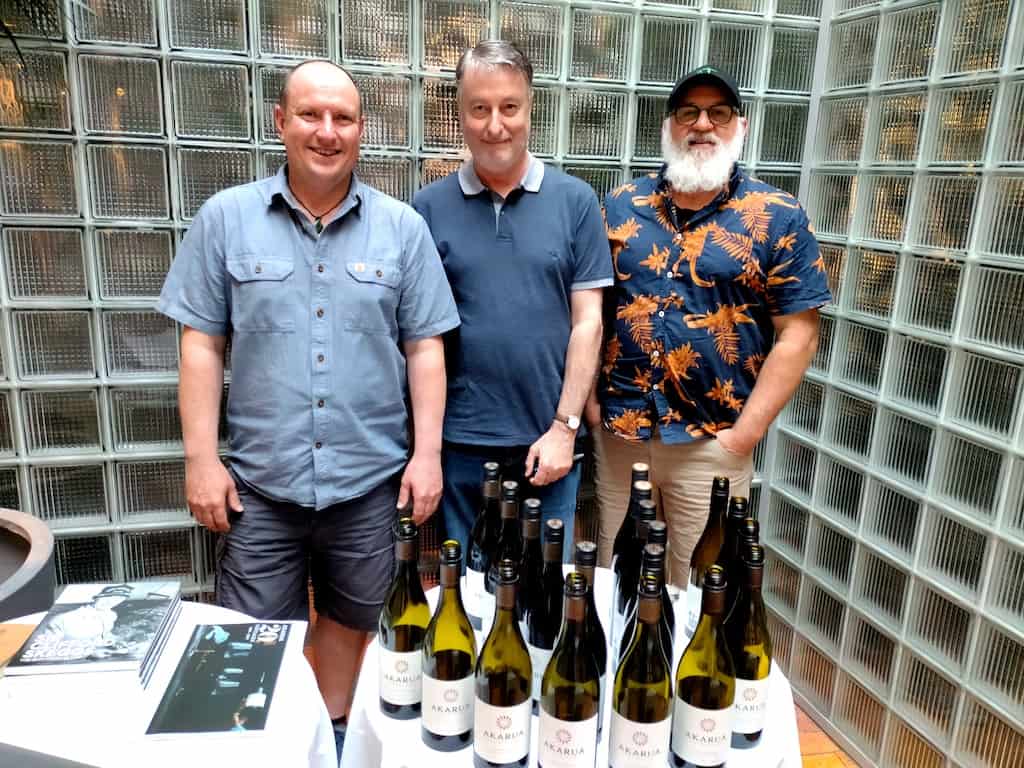PHIL PARKER gets acquainted with Akarua wine in a vertical tasting with a hint of horizontal floor-holding.

Akarua was founded in Bannockburn, Central Otago in 1995 by South Island businessman and former Mayor of Dunedin, Sir Clifford Skeggs. Initially, plantings consisted of 50 hectares, with 70 percent in Pinot Noir. To keep up with demand, from 2014 Akarua began purchasing prime established vineyards at the end of Felton Road in Bannockburn and in Pisa sub-regions. A true ‘location-location’ winery, it’s located on the slopes above Lake Dunstan.
Today, the premium Akarua Pinot Noir is the star. However, they also grow Chardonnay and Pinot Gris, and produce Rosé and a Champagne method sparkler.
Would you like to support our mission to bring intelligence, insight and great writing to entertainment journalism? Help to pay for the coffee that keeps our brains working and fingers typing just for you. Witchdoctor, entertainment for grownups. Your one-off (or monthly) $5 or $10 donation will support Witchdoctor.co.nz. and help us keep producing quality content. It’s really easy to donate, just click the ‘Become a supporter’ button below.
The name Akarua was chosen to honour the establishment of the estate; two Maori words together meaning “two vines”, referring to the original varietals planted, Pinot Noir and Chardonnay. The New Zealand Mountain Daisy indigenous to the region was chosen as Akarua’s emblem, anchoring the estate to the beauty of Central Otago.

In 2001 additional land was purchased and a further 48 hectares added to the portfolio – at that time making Akarua Central Otago’s largest family-owned estate. The 2002 vintage of Akarua Pinot Noir threw the estate into the media spotlight for the first time, receiving a trophy from the Air New Zealand Wine Awards for Best Wine of Show.
In 2008, David – Son of Sir Clifford and Lady Marie – became Managing Director of Akarua. This same year was the first vintage of RUA Pinot Noir, which was launched into the market as a more approachable and early-drinking style. The popularity of RUA has soared over the years both in New Zealand and abroad, celebrated for quality, consistency, and affordability. The 2017 RUA Pinot Noir was awarded three trophies including ‘Best Wine of Show’ by the 2019 Sydney International Wine Competition, a reinforcement of the forward-thinking decision made over 10 years earlier.
So – when I was kindly invited to a tasting of 10 consecutive vintages of their premium Pinot Noir, I said yes. Who wouldn’t?

Lucky for me as a JAFFA, the tasting was in Auckland at Hotel DeBrett and hosted by winemaker Andrew Keenleyside and viticulturist Mark Naismith. It was mid-afternoon, and no doubt Andrew and Mark had hosted numerous other writers during the day, but they were welcoming and entertaining. We started with the 2009 vintage and progressed year-by-year to 2019.
The term ‘vertical tasting’ derives from the practice of reviewing wines in order from consecutive vintages. Horizontal tasting is where you have had too many samples and must hold on to the floor so you that you don’t fall off.
I won’t get too text-heavy with notes on every single wine, but each wine was quite distinctive. The 2009 vintage was made by Matt Connell with viticultural input from Gillian Wilson. It is still drinking very well with what we call secondary characteristics – i.e. not a lot of upfront fruit on the palate but more savoury flavours. There’s still a hint of cherry and a whiff of tawny port.
As the tastings progressed, the fruit intensity increased and more floral notes crept in with the younger wines. Another factor is that from 2009 to 2019 the vines have aged and produced better quality fruit – typically a lower crop from old vines, but higher quality fruit.

Some years were a challenge. As well as vine age, the weather is an unpredictable factor in any vintage. For example, in 2012 they had snow in January, a hot Autumn and higher rainfall than normal. Mark Naismith joined that year as viticulturist and then Andrew Keenleyside joined in 2015 as assistant winemaker, taking over full time in 2016.
Standout vintages, to me, were 2013, 2014, 2016, 2017, 2018 and 2019. Talking to Andrew and Mark, they had obviously settled into the job, letting the vines get on with it, and were taking a more hands-off approach with little intervention such as crop-thinning, and also allowing a larger proportion of wild yeast (indigenous yeast in the vineyard) to exert its influence on the wine.
A great opportunity to taste some of Central Otago’s finest. Thanks to Akarua and the team.















